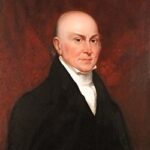The Adams American System Vision
President John Quincy Adams unveiled his Adams American System in December 1825. His first annual message to Congress outlined sweeping federal investments. The plan called for national roads, canals, universities, and astronomical observatories. Adams believed federal spending would unite the growing nation through improved infrastructure. 💰 He proposed millions in federal dollars for internal improvements across all states.
Congressional Opposition Emerges
Southern Democrats immediately attacked the Adams American System as unconstitutional overreach. They argued the Constitution granted no such spending powers to federal government. Critics claimed the program favored wealthy Northern merchants over farmers. States’ rights advocates feared federal control over local projects. ⚠️ Opposition leaders called it dangerous precedent for unlimited government expansion.
Economic Concerns Surface
Fiscal conservatives questioned the massive spending proposals in Adams’ plan. The federal budget could not support such extensive infrastructure investments. Critics worried about increasing national debt through the American System. 📊 They argued states should fund their own internal improvements instead.
Impact:
Political Damage to Adams
The Adams American System became a liability in his reelection campaign. Andrew Jackson’s supporters used it to portray Adams as elitist. They claimed he favored educated classes over common citizens. 🔥 The controversy helped Jackson mobilize opposition voters in 1828. Adams lost decisively, serving only one term as president.
Constitutional Precedent Set
The American System debate shaped future federal spending arguments. It established clear divisions between federal and state responsibilities. Southern states strengthened their states’ rights positions through this controversy. The dispute foreshadowed later sectional conflicts over federal power. Constitutional scholars still reference this debate in infrastructure discussions today.
Infrastructure Development Delayed
Adams’ defeat slowed national infrastructure progress for decades. Many proposed roads and canals remained unbuilt until later administrations. 📉 Private companies eventually completed some projects without federal funding. The controversy made future presidents cautious about large spending programs. American infrastructure development lagged behind European nations partly due to this political failure.
